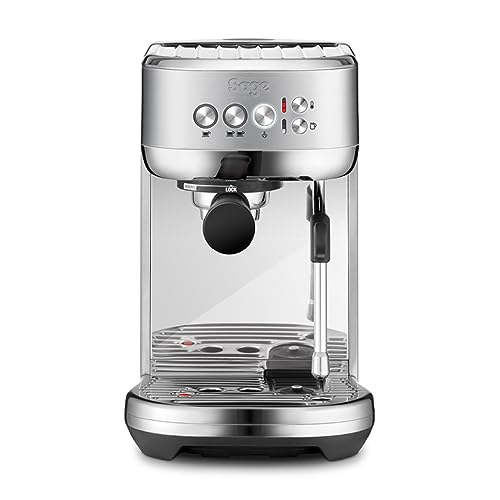What to Look For in a Commercial Espresso Machine
When purchasing a commercial coffee machine, there are several things to take into consideration. The volume of your cafe's operation, service use and barista knowledge will determine which espresso machine is best for your business.
A double boiler system provides the ability to brew and steam simultaneously. It also decreases the time between pulls. Proportional-integral-derivative (PID) temperature control manages on/off cycles for optimal boiler temperatures.
Productivity
A commercial espresso machine is designed to handle a larger amount of coffee than a home espresso machine. A domestic espresso machine may not work in a professional environment.
A commercial machine of high quality will be able serve up to 100 coffee cups in an hour during peak times. This can be a lifesaver in busy workplaces, since it stops employees from waiting for hours to get their coffee.
Coffee machines can help workers bond. Sometimes, teams of people be able to swap coffee for each other, and this can encourage teamwork and collaboration in the workplace. A dedicated coffee area can help new employees feel more comfortable in their workplace and break down barriers between them, the senior staff members, and other workers.
Commercial espresso machines are available in a variety of sizes to meet a range of requirements. Some models are completely automatic, while others are able to program espresso shots in advance so that the operator does not have to guess the correct shot size. This is especially crucial for businesses with inexperienced baristas, since inaccurate shots can greatly impact the intensity and flavor of espresso. In addition, it's best to purchase ethically-sourced and commercial espresso machines that help the communities in which coffee is harvested. This will ensure a high quality product and minimize the negative impact on the environment.

Safety
Espresso machines can cost as much as a mini-car. The machines are designed to produce hundreds of drinks and shots in one day. These high-volume operations can create unique safety and health risks for employees, which is why it's crucial to think about the potential dangers that come with a commercial espresso machine.
Keep in mind that commercial espresso machines are likely to utilize warm water. This can trigger the growth of bacteria. Poorly maintained machines that are not descaled and cleaned regularly can accumulate spent espresso. This could cause it to go rancid, and potentially cause illness when consumed by customers. A commercial espresso machine with steam wands that are not sealed can allow bacteria to thrive in the milk foaming process.
When choosing a commercial espresso machine, it is important to think about the type of beverages you'll be serving and the number of cups per hour your space can hold. You should also look for machines that have automation features, which make it simpler and quicker to serve your customers your favorite coffee drink. In addition, look for a warranty that covers parts and labor, so that any technical issues are solved quickly and efficiently.
Energy Efficiency
The power requirements for commercial espresso machines are significantly higher than those of home models. This is because professional espresso machines are built with heavier frames and large capacity boilers to support the multiple group heads required for typical cafe production. They also operate at a higher ambient temperature and are usually located in an indoor setting (such as cafes or restaurants) where the electronics may overheat quickly resulting in machine failure.
The boiler of commercial espresso machines provides heat and storage for pressurized water that is supplied by an electric pump. This water is used to make steam and brew espresso. The boiler is made up of several copper tubes heated by electric elements. When the brew level sensor detects that the water has reached the desired level, a solenoid valve opens to let the boiler fill with water that is fresh and the heating element is turned off.
There are four variants of espresso machines that are distinguished by their ability to brew and steam in the form of The TB (brewing only), TX (twin boilers), HX, and DA (double automatic). TB and TX machines have stable brew temperatures, while DA offers rapid steaming using only one boiler. www.coffeee.uk are switching to HX machines as they have been proven to offer the best of both worlds, in terms of brew and steam temperatures.
Maintenance
Like cars that require regular tune-ups commercial espresso machines also require maintenance to run smoothly and efficiently. If you ensure that you maintain your machine in good condition, it will provide you better tasting coffee and last longer.
It's a daily ritual to clean your espresso machine, however you should also pay attention to those parts that require an extra clean. There will be traces of coffee grounds and other milk products that can cause the machine to breakdown over time. Regular cleaning helps prevent this from happening and helps keep your espresso machine working at the best it can.
Most commercial espresso machines require descaling every three months. This process requires a few extra steps when compared to normal cleaning. You'll want review your manual to ensure you follow all the steps. Descaling is the process of using a solution that dissolves scale from the water tank. To do this you'll need an unfilled container under the steam wand and, in certain models, under the coffee spouts. Follow the directions for your particular model.
Another aspect of maintenance is changing the water filters. It's easy to overlook however it's important not to get mineral deposits. It is also important to look for calcification within the spray head, which is difficult to remove.
